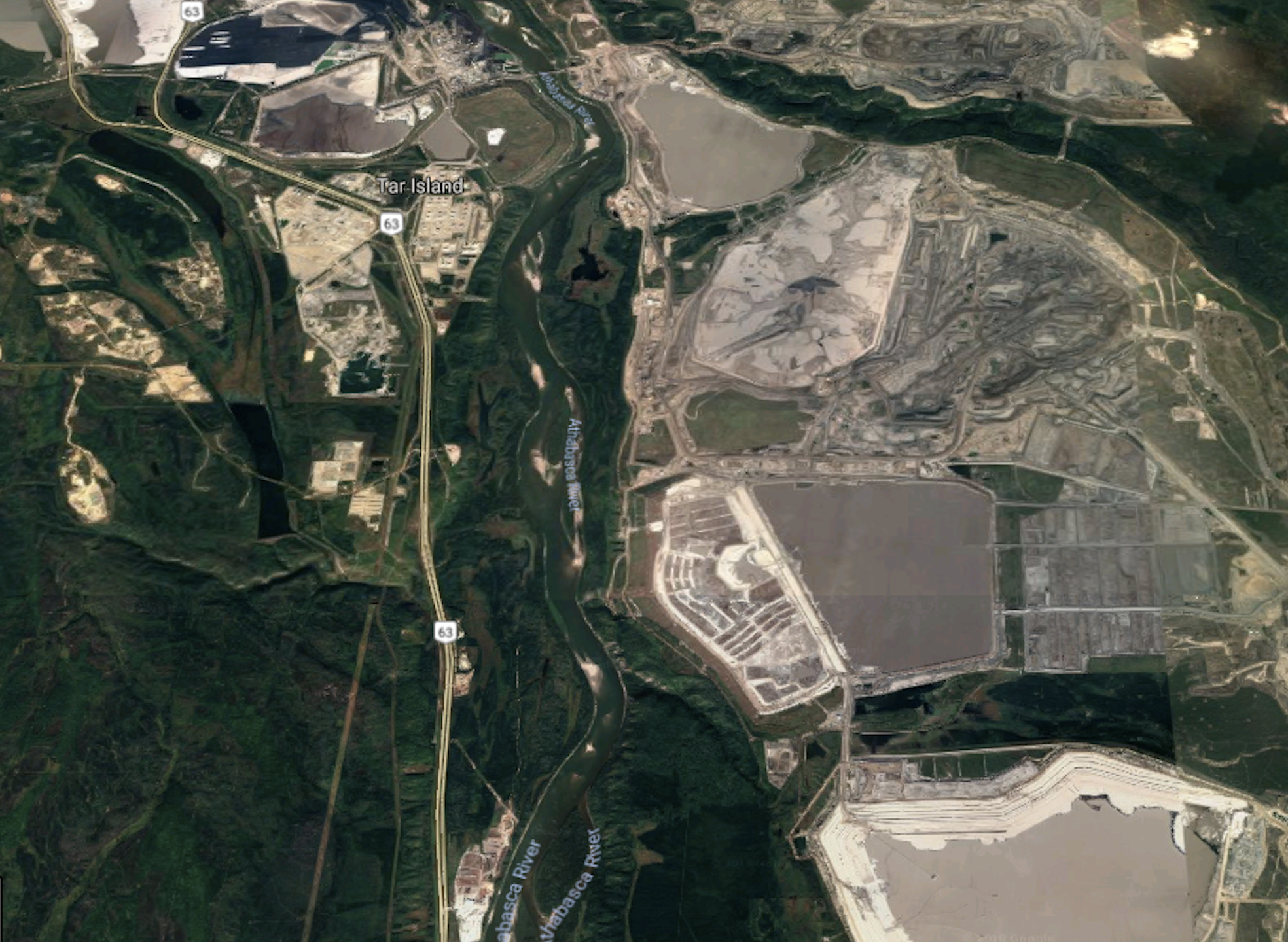Having a mortgage is a hassle. All those pesky requirements like property assessments, down payments and monthly payments.
Imagine if you could just tell the bank how much money you think you owe them and that you’ll settle up 70 years after you move out. Wouldn’t that be easier?
That is essentially the deal Suncor has been granted by the Alberta government regarding the ballooning liability from their oilsands tailing ponds and related reclamation requirements.
Like all other operators in the industry, every year Suncor presents the Alberta taxpayer with an estimate of what the corporation thinks it will cost to reclaim the artificial lakes of toxic sludge it has created, in Suncor’s case since mining began in1967. No supporting documentation required.
But wait, there’s more! Last fall, the Alberta Energy Regulator (AER) approved a previously rejected plan from Suncor that allows the company 70 years after the mine closes in 2033 to sign off on its reclamation requirements.
Collectively, tailings ponds now cover 25,000 hectares in northern Alberta and contain a poisonous brew of organic acids, benzene, lead and fine clay particles that have not significantly settled out in 50 years. The result is lakes of toxic yogurt impounded by the largest earthen structures in the world.
The current plan, to be completed almost a century from now, involves pumping this poisonous slurry into abandoned mining pits and covering it with a water cap — an unproven technique based on the dubious assumption that the contaminated and uncontaminated layers will somehow not mix decades into the future.
Alberta has the constitutional right to manage resources as the province sees fit, but the current situation could be described as regulatory humiliation. Bitumen royalties make up less than four per cent of the provincial budget and capture a similarly puny proportion of the market value of bitumen produced by the companies.
Since 1975, the province produced over 4,800 trillion cubic metres of natural gas, 17.4 billion barrels of conventional crude and 11.4 billion barrels of bitumen with cumulative current value of $1.7 trillion.
Successive governments since Premier Peter Lougheed somehow managed to convert this vast resource bounty into a growing public debt of $43 billion.
This shockingly inept fiscal management could soon become the problem of all Canadian taxpayers if the largely unsecured liabilities of bitumen tailing ponds are included in the equation. Cleanup costs, as estimated by industry, amount to $27 billion, while other observers put the risk closer to $48 billion. Only $1.4 billion is currently secured by cash reserves from the companies; the rest is backed only by the value of unmined bitumen.
What happens if global economic forces or disruptive technologies render the remaining bitumen reserves uneconomic? The oilsands are consistently touted as a driver of national economic growth. What if they instead become an expensive and worthless mess the rest of the country is on the hook to clean up?
An unfolding disaster around abandoned conventional oil and gas wells offers an illuminating glimpse into the future.
Last March, Chinese-controlled Sequoia Resources announced to provincial regulators it was broke and walking away from 3,000 oil and gas well sites with a potential cleanup liability of $500 million. Sequoia posted no reclamation funds to cover remediation costs, as is typically required, because Alberta regulators granted the failing company exemptions from solvency requirements.
Province-wide there are 150,000 abandoned or inactive wells, many of which date back 40 years. Another 100,000 or so wells have not officially declared abandoned or inactive but have been paying no royalties to the provincial government and will likely also become the problem of taxpayers and landowners.
This massive backlog is due largely to an Alberta policy unique in North America. Companies have no deadlines to clean up abandoned wells. Both the oil industry and the C.D. Howe Institute estimate potential cleanup liabilities have so far reached up to $8 billion. In contrast, North Dakota has zero abandoned wells — the last one was remediated in 2016.
Sometime this spring, the Supreme Court of Canada will rule on a landmark case regarding abandoned well liabilities. Two Alberta courts previously ruled that private creditors of bankrupt Redwater Energy Corp. were first in line for liquidated assets, ahead of its obligation to pay for environmental cleanup.
This legal precedent opened the floodgates for other failing oil companies to wash their hands of $100 million in cleanup costs and counting. If the Supreme Court upholds this decision, it may have important ramifications for the much larger elephant in the room — the multi-billion dollar bill for bitumen tailing ponds.
Don’t believe your tax dollars could one day be on the hook for Alberta’s incompetent oversight of their oil industry? Throwing federal money at disasters created by captured local regulators is sadly a storied Canadian tradition.
After operating for 56 years and producing seven million ounces of gold worth almost $12 billion, the Giant Mine in Yellowknife went into receivership in 2004, leaving Ottawa with a $1-billion remediation bill. The Sydney tar ponds cleanup in Cape Breton cost Canadians another $400 million. Ottawa has already contributed $30 million to Alberta’s orphan well fund — a trickle that could soon become a deluge.
Economic cheerleading by federal and provincial politicians and the mainstream media on behalf of the oil industry is doing the public a great disservice. When the party is over in the oil patch, Canadian taxpayers may find themselves doing the dishes. ![]()















Tyee Commenting Guidelines
Comments that violate guidelines risk being deleted, and violations may result in a temporary or permanent user ban. Maintain the spirit of good conversation to stay in the discussion.
*Please note The Tyee is not a forum for spreading misinformation about COVID-19, denying its existence or minimizing its risk to public health.
Do:
Do not: